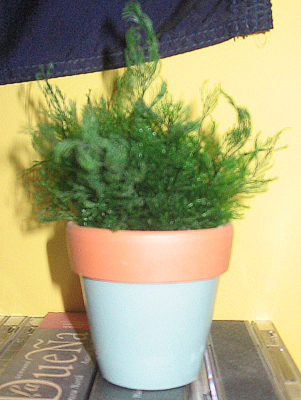Air fern on:
[Wikipedia]
[Google]
[Amazon]
The air fern (''Sertularia argentea'') is a  The fernlike branches of ''S. argentea'' are composed of many small,
The fernlike branches of ''S. argentea'' are composed of many small,
Wayne's word on Air ferns
{{Taxonbar, from=Q146608 Sertulariidae Animals described in 1758 Taxa named by Carl Linnaeus
species
In biology, a species is the basic unit of classification and a taxonomic rank of an organism, as well as a unit of biodiversity. A species is often defined as the largest group of organisms in which any two individuals of the appropriat ...
of marine animal in the family Sertulariidae. It is also known as the sea fir and Neptune plant.
These so-called "ferns" are dead and dried colonies of hydrozoa
Hydrozoa (hydrozoans; ) are a taxonomic class of individually very small, predatory animals, some solitary and some colonial, most of which inhabit saline water. The colonies of the colonial species can be large, and in some cases the specialize ...
ns, colonies of marine
Marine is an adjective meaning of or pertaining to the sea or ocean.
Marine or marines may refer to:
Ocean
* Maritime (disambiguation)
* Marine art
* Marine biology
* Marine debris
* Marine habitats
* Marine life
* Marine pollution
Military ...
hydroids, class
Class or The Class may refer to:
Common uses not otherwise categorized
* Class (biology), a taxonomic rank
* Class (knowledge representation), a collection of individuals or objects
* Class (philosophy), an analytical concept used differently ...
Hydrozoa
Hydrozoa (hydrozoans; ) are a taxonomic class of individually very small, predatory animals, some solitary and some colonial, most of which inhabit saline water. The colonies of the colonial species can be large, and in some cases the specialize ...
, phylum
In biology, a phylum (; plural: phyla) is a level of classification or taxonomic rank below kingdom and above class. Traditionally, in botany the term division has been used instead of phylum, although the International Code of Nomenclature ...
Cnidaria
Cnidaria () is a phylum under kingdom Animalia containing over 11,000 species of aquatic animals found both in freshwater and marine environments, predominantly the latter.
Their distinguishing feature is cnidocytes, specialized cells that ...
. Hydroids are related to coral
Corals are marine invertebrates within the class Anthozoa of the phylum Cnidaria. They typically form compact colonies of many identical individual polyps. Coral species include the important reef builders that inhabit tropical oceans and se ...
s and jellyfish
Jellyfish and sea jellies are the informal common names given to the medusa-phase of certain gelatinous members of the subphylum Medusozoa, a major part of the phylum Cnidaria. Jellyfish are mainly free-swimming marine animals with umbre ...
.
These dried hydroid colonies are commonly sold as a curiosity, as a decorative "indoor plant
Plants are predominantly photosynthetic eukaryotes of the kingdom Plantae. Historically, the plant kingdom encompassed all living things that were not animals, and included algae and fungi; however, all current definitions of Plantae excl ...
", or as underwater decorations for aquaria in stores. They are sometimes labeled as "Neptune plants". Despite a superficial resemblance to plants, they are actually animal skeleton
A skeleton is the structural frame that supports the body of an animal. There are several types of skeletons, including the exoskeleton, which is the stable outer shell of an organism, the endoskeleton, which forms the support structure inside ...
s or shells. The dried colonies are often dyed green, but, when soaked in water, the coloring will dissolve.
 The fernlike branches of ''S. argentea'' are composed of many small,
The fernlike branches of ''S. argentea'' are composed of many small, chitin
Chitin ( C8 H13 O5 N)n ( ) is a long-chain polymer of ''N''-acetylglucosamine, an amide derivative of glucose. Chitin is probably the second most abundant polysaccharide in nature (behind only cellulose); an estimated 1 billion tons of chit ...
ous chambers where individual animals once lived. When the colony was alive, a polyp with numerous tentacles
In zoology, a tentacle is a flexible, mobile, and elongated organ present in some species of animals, most of them invertebrates. In animal anatomy, tentacles usually occur in one or more pairs. Anatomically, the tentacles of animals work mainl ...
occupied each of the chambers, called hydrotheca.
Sometimes dried bryozoa
Bryozoa (also known as the Polyzoa, Ectoprocta or commonly as moss animals) are a phylum of simple, aquatic invertebrate animals, nearly all living in sedentary colonies. Typically about long, they have a special feeding structure called a ...
are sold as "air ferns."
Most commercially sold air ferns are collected as a by-product by trawlers Trawler may refer to:
Boats
* Fishing trawler, used for commercial fishing
* Naval trawler
Naval trawlers are vessels built along the lines of a fishing trawler but fitted out for naval purposes; they were widely used during the First and Second ...
in the North Sea
The North Sea lies between Great Britain, Norway, Denmark, Germany, the Netherlands and Belgium. An epeiric sea on the European continental shelf, it connects to the Atlantic Ocean through the English Channel in the south and the Norwegian ...
.
References
External links
Wayne's word on Air ferns
{{Taxonbar, from=Q146608 Sertulariidae Animals described in 1758 Taxa named by Carl Linnaeus